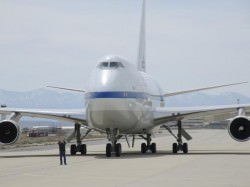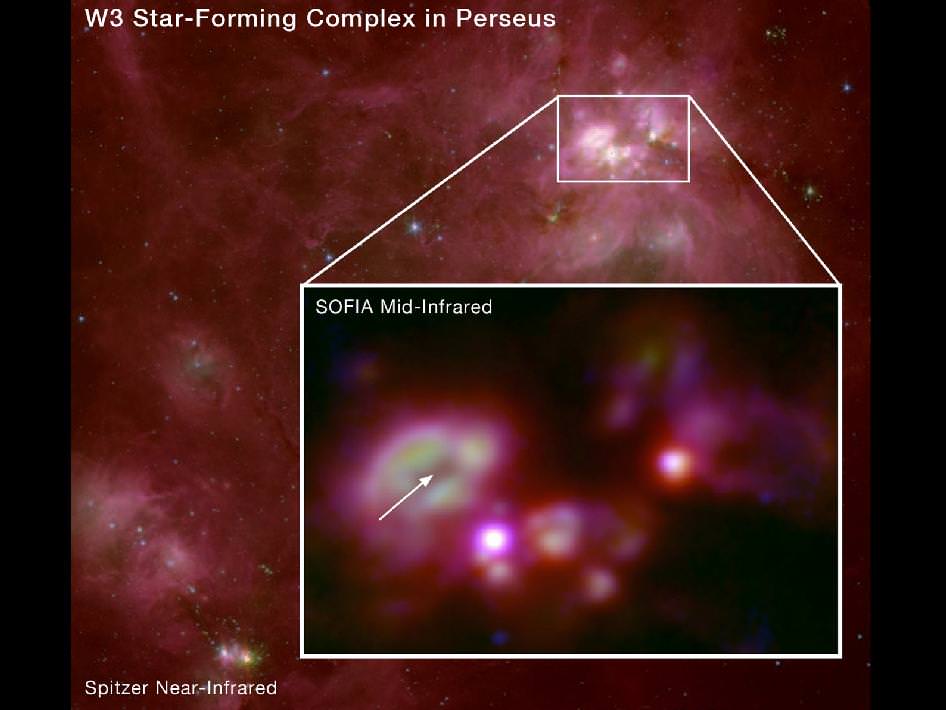[/caption]
(DING!) “The captain has turned off the safety lights – you are now free to explore the infrared Universe.”
Mounted inside the fuselage of a Boeing 747SP aircraft, NASA’s Stratospheric Observatory for Infrared Astronomy, or SOFIA, is capable of searching the sky in infrared light with a sensitivity impossible from ground-based instruments. Cruising at 39,000 to 45,000 feet, its 100-inch telescope operates above 99% of the atmospheric water vapor that would otherwise interfere with such observations, and thus is able to pierce through vast interstellar clouds of gas and dust to find what lies within.
Its latest discovery has uncovered a cluster of newborn stars within a giant cloud of gas and dust 6,400 light-years from Earth.
The massive stars are still enshrouded in the gas cloud from which they formed, a region located in the direction of Perseus called W3. The Faint Object Infrared Camera for the SOFIA Telescope (FORCAST) instrument was able to peer through the cloud and locate up to 15 massive young stars clustered together in a compact region, designated W3A.

W3A’s stars are seen in various stages of formation, and their effects on nearby clouds of gas and dust are evident in the FORCAST inset image above. A dark bubble, which the arrow is pointing to, is a hole created by emissions from the largest of the young stars, and the greenish coloration surrounding it designates regions where the dust and large molecules have been destroyed by powerful radiation.
Without SOFIA’s infrared imaging capabilities newborn stars like those seen in W3A would be much harder to observe, since their visible and ultraviolet light typically can’t escape the cool, opaque dust clouds where they are located.
The radiation emitted by these massive young stars may eventually spur more star formation within the surrounding clouds. Our own Sun likely formed in this same way, 5 billion years ago, within a cluster of its own stellar siblings which have all long since drifted apart. By observing clusters like W3A astronomers hope to better understand the process of star birth and ultimately the formation of our own solar system.
Read more on the SOFIA news release here.
The observation team’s research principal investigator is Terry Herter of Cornell University. The data were analyzed and interpreted by the FORCAST team with Francisco Salgado and Alexander Tielens of the Leiden Observatory in the Netherlands plus SOFIA staff scientist James De Buizer. These papers have been submitted for publication in The Astrophysical Journal.


Doing IR astronomy by stratospheric aircraft certainly saves on rocket launches. I will confess I have always wondered how vibration is accounted for, particular due to the 570mph air rushing past the telescope opening.
LC
According to the SOFIA paper (PDF):